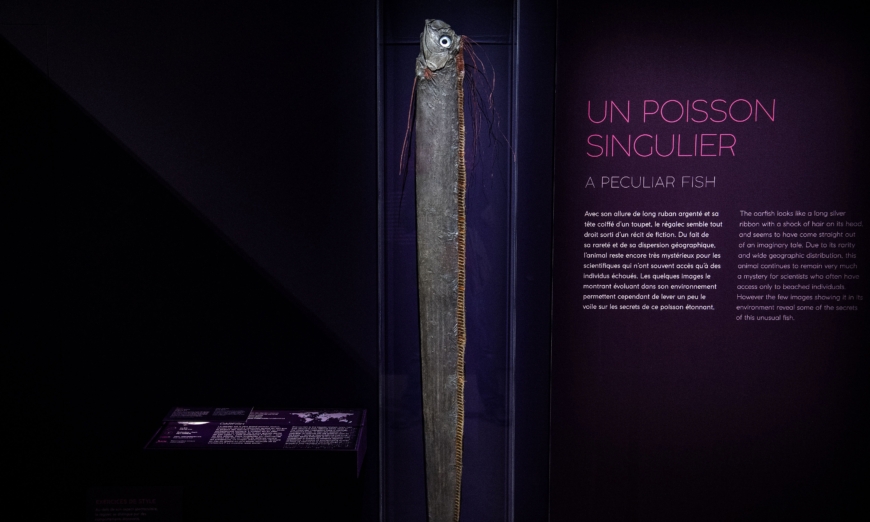A Taiwanese diving instructor reported a rare sighting of an “earthquake fish” in the shallow waters off the coast of Taiwan last week.
The diver, Wang Cheng-Ru, shared footage of the usually deepsea oarfish, sightings of which at the ocean surface have been associated with earthquakes.
His footage, taken off the coast of New Taipei’s Ruifang District, east of Keelung on June 28, was picked up by local media outlets.
The oarfish, or Regalecus russelii, is usually found at depths of 1,000 meters (3,280 feet). Traditional cultures including those in Taiwan, Japan, and Peru, have noted sightings throughout the historic record of the fish appearing in surface waters directly before or after significant seismic activity.
In Japan, locals call the oarfish ryugu no tsukai, which means “messenger from the palace of the dragon king.” According to folklore, the fish rise from the depths to the surface and beach themselves when an earthquake is coming.
While scientists say that there is no proof that oarfish are able to predict natural disasters, there are various theories as to how they might do so.
Following the Fukushima earthquake and tsunami in 2011, which saw dozens of reported oarfish sightings in the lead-up to the earthquake, researchers speculated that physical injury from seismic-related activity could cause damage to the fish, forcing sick fish up to the surface.
“I have around 20 specimens of this fish in my collection so it’s not a very rare species, but I believe these fish tend to rise to the surface when their physical condition is poor, rising on water currents, which is why they are so often dead when they are found,” Hiroyuki Motomura, a professor of ichthyology at Kagoshima University, told the South China Morning Post at the time.
Rachel Grant, a lecturer in animal biology at Anglia Ruskin University in Cambridge, United Kingdom, said in 2017 that it is “theoretically possible” that oarfish deaths could be a signal of earthquakes to come.
“When an earthquake occurs there can be a build-up of pressure in the rocks which can lead to electrostatic charges that cause electrically-charged ions to be released into the water,” she told Euro News. “This can lead to the formation of hydrogen peroxide, which is a toxic compound. The charged ions can also oxidise organic matter which could either kill the fish or force them to leave the deep ocean and rise to the surface.”
According to the National Oceanic and Atmospheric Administration, the creatures likely only come to the surface when they’re injured or dying.
Earthquakes in the Western Pacific that registered over 2.5 magnitude in strength on July 2, 2023. (Screenshot via The Epoch Times/USGS)
The Pacific Ocean saw multiple large earthquakes this week along the “Pacific Ring of Fire”: a 6.4 magnitude quake off Indonesia’s Java on June 30; a 6.9 magnitude quake near the island of Tonga on July 2; and a 6.2 magnitude quake off Indonesia’s Papua province on July 3.
Simon Veazey contributed to this article.



